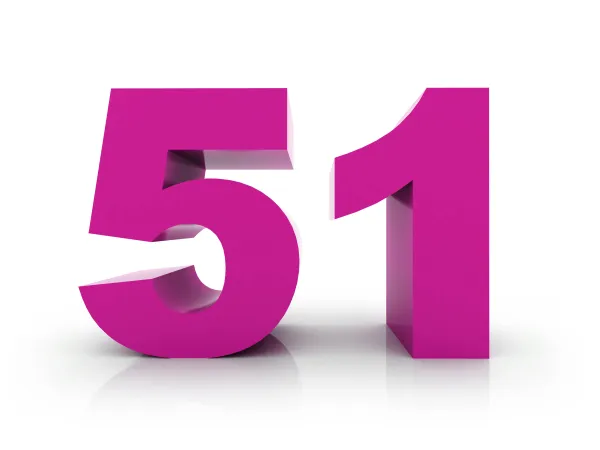Override CCI Edits, When Appropriate, With Modifiers 51/59

Recognize that Medicare prefers you don’t use one of these modifiers.
Depending on the clinical circumstances, you might use either modifier 51 or modifier 59 to override Correct Coding Initiative (CCI) edits. Deciding which one applies can trip up even experienced coders.
Modifier 51 (Multiple procedures) identifies that more than one surgical procedure took place during one session while modifier 59 (Distinct procedural service) is used to identify procedures/services, other than E/M services, that are not normally part of one service or not billable separately, but are appropriate under the circumstances.
Take a look at this expert advice on how to differentiate the two modifiers. Plus, don’t miss a must-know tip that may alter how you bill multiple procedures to some payers.
Flag the Second, Third, etc. Procedure(s) With Modifier 51
When your physician, or another medical healthcare professional, performs more than one procedure during the same operative session, you need your coding to communicate that to your payer.
Using modifier 51 with the appropriate procedure codes (other than E/M, physical medicine, and rehabilitation services or provision of supplies or medications such as vaccines) will tell the payer to apply the multiple procedure payment formula to the CPT® code.
Example: If you are billing for a repair of a rotator cuff using 23412 (Repair of ruptured musculotendinous cuff [e.g., rotator cuff] open; chronic), a ligament release with 23415 (Coracoacromial ligament release, with or without acromioplasty), and a claviculectomy using 23120 (Claviculectomy; partial), report the codes as follows:
Exception: This modifier should not be appended to designated add-on codes. Modifier 51 indicates a procedure or service that can be performed independently but, may be performed at the same time as another procedure; add-on codes can only be reported with a primary procedure code. CPT® stresses this point by stating, “All add-on codes found in the CPT® book are exempt from the multiple procedure concept.”
Caveat: Your payer may not accept this modifier. Medicare, for example, prefers that modifier 51 not be used because electronic processing of claims automatically makes the necessary reduction in payment based on a hierarchy of the RVUs assigned to each code submitted.
Best bet: Contact your payers and ask if they require the modifier. Typically, if they process claims electronically like Medicare, they won’t need the modifier.
Figure Out Your Anticipated Reimbursement
Medicare pays for multiple surgeries by ranking from the highest physician fee schedule amount to the lowest physician fee schedule amount. They pay 100 percent of the highest and 50 percent for each of the other codes.
Do your calculations using the example above to see your fees when using this modifier.
When you multiply the RVUs by the national conversion factor of 35.8228, you get the national allowable fee:
23412 — $871.57
Once you have the fees, you can multiply by .50 to get the total modifier 51 reimbursement for the second and third procedures:
23415-51 — $355.01
Unbundle a Code Using Modifier 59
If you need a modifier to unbundle a service or procedure that was performed on the same day and you don’t already have a more descriptive modifier, such as an anatomical or bilateral modifier that is appropriate to use with your code, use modifier 59 as a last resort. Using 59 will signal your payer that non-E/M services that are normally bundled, need to be identified and paid separately.
Don’t overlook: There are key points that you want to take into account in the documentation when using modifier 59. Documentation must support a different session, procedure or surgery, site or organ system, incision/excision, separate lesion, or separate injury (or area of injury in extensive injuries) not ordinarily encountered or performed on the same day by the same medical professional.
Example: Your pulmonologist performs a bronchoscopy and detects what appears to be lung cancer in the right upper lobe airway. He performs a bronchial biopsy (31625, Bronchoscopy, rigid or flexible, including fluoroscopic guidance, when performed; with bronchial or endobronchial biopsy(s), single or multiple sites) of the lesion, and a brushing (31623, ... with brushing or protected brushings) in the same area. However, to determine if the cancer has spread to the lymph nodes, he performs a transcharinal needle aspiration in the trachea (31629, ... with transbronchial needle aspiration biopsy[s], trachea, main stem and/or lobar bronchus[i]). Report the codes as follows:
Remember: The two codes in a CCI code pair edit often represent different procedures. That fact alone does not warrant a provider using modifier 59. However, if the two procedures are performed at separate sites or at separate patient encounters on the same date of service, you may be able to attach modifier 59.
23415 — $710.01
23120 — $596.81.
23120-51 — $298.41.
Total payment: $1,524.99

